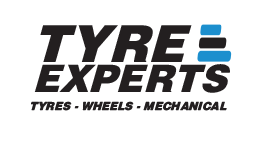How do I know which size of tyre is right for my vehicle?
The size details of your current tyre can be located on the sidewall of your tyre. There are a number of different size ratios that must be considered when understanding the overall size of your tyre, including the:
- Aspect ratio
- Diameter
- Maximum speed capacity
- Maximum load capacity
Our tyre specialist can help to identify all of these factors to ensure we select the right tyre for your vehicle.
How can I check if my tyres are safe?
The safety of your vehicle on the road is dependent on the depth of your tyre tread. Because of this, it is very important to check your tyres regularly to ensure that there is an adequate tread depth, especially before embarking on a long haul drive.
Ensure that you thoroughly examine the tyres for cracks and small superficial punctures as they can cause further damage if not repaired. Checking the wear patterns on the tyres can also indicate that the tyres are correctly inflated and the wheels are balanced.
Most tyres also have a tread wear indicator bar so you will be able to see if the tread has been worn down to an unsafe level. When the tyre is worn a rubber will appear across the width of the tread which can indicate it is time to change your tyres.
It is also important to check the tyre pressure fortnightly.
Do I need to replace a punctured tyre or can it be repaired?
The decision between replacing or repairing a damaged tyre is very important. On some occasions a tyre is beyond repair, however if the damage is on tread it may be able to be repaired. This decision requires a trained tyre specialist who must remove the tyre from the wheel to thoroughly assess the damage.
As a rule of thumb often holes beyond 6 millimetres cannot be repaired, as well as tyres that have travelled even just a short distance from the puncture location.
In the event that your tyre is damaged it is advised that you change the tyre over to your spare and visit a tyre specialist as soon as possible.
How can I drive safely in the rain?
Knowing how to get the most out of your tyres while driving in wet conditions is very important to ensure you are safe on the roads. Some tips for driving safely in the rain include:
- Driving to suit the conditions, in particular lowering your speed to allow for more of the tyres tread to make contact with the roads surface to achieve better traction
- Check you tyres before you drive to make sure you have adequate tread depth
- Allow extra room between your vehicles and others on the roads
- Ensure that if you do loose traction with the road that you do not slam on the brakes, but rather apply steady pressure and ensure that you steer towards the skids direction.
- Drive in the tracks of the vehicle in front
- By easing into braking, accelerating or making corners you can potentially avoid aquaplaning
How can I take care of my vehicle’s battery?
Your vehicle’s battery is responsible for the primary power source for your vehicles, as well as the secondary power source for the electrical components in your vehicle. In order to get the most longevity out of your vehicles battery we suggest to:
- Clean the positive and negative terminals in order to remove corrosion
- Tighten any loose connections or terminals
In addition to these steps it is important to receive regular battery checks by a trained automotive specialist to ensure that your battery has ample power.
What can indicate that there may be a problem in my vehicle’s battery?
There are a number of factors that may indicate that your car battery is not performing at its highest capability, including:
- The battery is continually running down
- The battery appears to be weak when you start the engine
- Your vehicle emits a clicking sound and will not start
If your vehicle will not start or is silent when the key is turned in the ignition it is likely that it is your car battery that is the issue. Our automotive specialists are trained to assist our customers in these situations so if this happens to you please don’t hesitate to call us on: (07) 5573 7788.
What should I do if my steering wheel vibrates when I drive?
It is important that if your steering wheel vibrates when you drive that you immediately seek to have the vehicle inspected. It is likely that this vibration is caused by an imbalance in wheels or tyres. Our automotive specialists can provide a wheel alignment to quickly rectify this concern, however if it is ignored it can cause a number of concerns.
A wheel alignment should be performed regularly to ensure that your vehicle is safe and the tyres are not suffering from more wear then is necessary.
What may indicate that I need a wheel alignment?
- If the steering wheel veers to either side
- Your car leans or wanders when on a straight path
- When you are replacing your tyres
- After any concerning run-ins with a kerb or pothole
In addition to these factors, our tyre specialists also recommend that you receive a wheel alignment every six months so you can receive the best possible performance from your tyres.
What may indicate that I may need to have my brakes checked?
- A screeching or grinding noise is presented when braking
- Your car veers to either side when braking
- The brake pedal pulsates when engaged
- Your brakes have lost sensitivity and feel loose
- The brake warning light is on
What may indicate that I may need to have my suspension checked?
- Your vehicle presents difficultly when steering
- Bouncing upon impact and reduced shock absorption when hitting a bump
- The tyres are wearing faster than usual
- The vehicle leans when taking corners
- Vibration in the steering wheel when making contact with a bump











